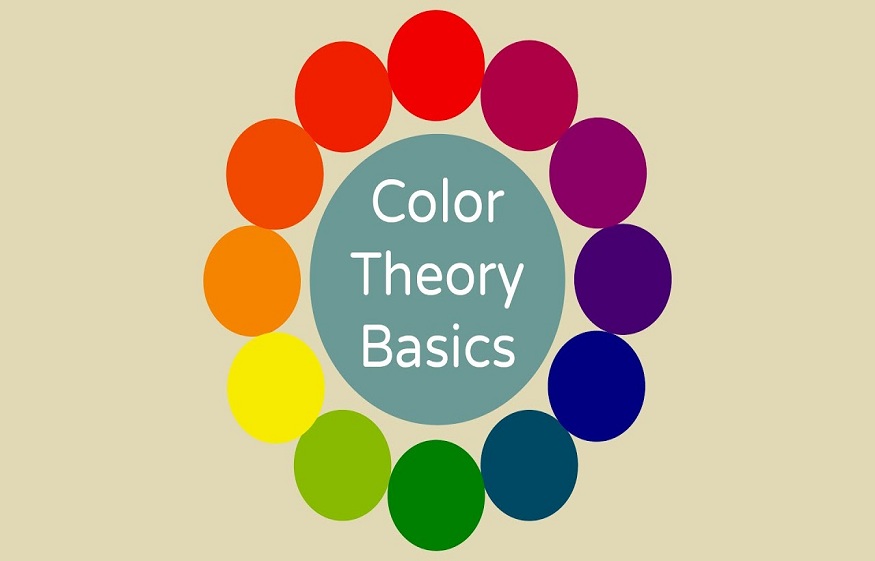The principles of color theory are a set of guidelines for choosing and combining colors to achieve a particular aesthetic result. These guidelines were developed by psychologists and artists. Utilizing tools such as those developed from color theory is one of the most time- and labor-saving approaches to selecting colors for a home palette. The perception of color can be both objective and subjective at the same time. People who work in the visual arts, such as graphic designers, painters, and decorators, can benefit from color theory because it can be used to generate useful models for their work.
Color theory is an attempt at a quantitative description of color.
Aesthetic Theory’s Evolution
People have always been drawn to color in a special way. Ancient people like Aristotle and Ptolemy wrote about color theory and how to use it. During the Renaissance, artists like Leonardo da Vinci and Michaelangelo made it easier to think about color in a more organized way. These men gave careful thought to how the colors in their work would make people feel. Sir Isaac Newton made huge changes to the way we think about colors. He looked into how white light makes the spectrum of colors. He put the colors red, orange, yellow, green, blue, indigo, and violet on the first color wheel. Newton did more tests and found that when red, blue, and yellow were mixed together, they made white light. He thought these were the “primary colors” that could be used to make any other color. Even though it’s not completely true, this idea has helped visual artists learn more about how colors work together. As our knowledge of how color works has grown, new color models have come into being. In the 19th century, scientists from Germany and England came up with a new set of primary colors based on how people see colors. By this measure, red, green, and blue are better than other colors. Modern printing and digital media use both this model and a newer one that uses cyan, magenta, and yellow (CMY). Even though these later color models can make a wider range of colors, traditional color theory is still based on Newton’s first primary colors: red, yellow, and blue.
Color Wheel
Newton’s original color wheel is a picture of the different colors we can see. A color wheel is a great way to see how the primary, secondary, and tertiary colors work together. A typical color wheel has twelve colors: three primary colors, three secondary colors, and six tertiary colors. Painters and decorators agree that red, blue, and yellow are the three most important colors. From these two, all the other colors can be made. Orange, purple, and green are all secondary colors that are made by mixing together two primary colors: red and blue for purple, blue and yellow for green, and red and red for orange. You can make a tertiary color by putting together a primary color and a secondary color. To illustrate, blue-green is the result of mixing blue and green. If you need inspiration for a beautiful bathroom or any space, check out Slingo.com.
Color Temperature
In the 1800s, the ideas of warm and cool colors became central to the study of color. In his Theory of Colors, Johann Wolfgang von Goethe put colors into two groups: warm and cool. He did this by putting red, orange, and yellow in the warm category, and blue, green, and purple in the cool category (1810). (green, blue, and violet). In the field of color design, color temperature labels are still very important. Warmer colors make you think of something more active. Colors in the range of red, orange, and yellow show energy, strength, and creativity. Even scientists have measured how much these colors wake us up and make us feel better. Color theorists call warm colors “advancing” because they are seen as more active in design. It is well known that blues, greens, and purples calm people down. The people who talk about colors call these colors “receding.” These colors help us relax by creating an atmosphere that makes us feel good.
Creating Color Harmony with the Color Wheel
The color wheel is the main tool interior designers use to make color schemes that work well together. One way to make something look good is to use colors that go well together. Even though people’s reactions are complicated and depend on things like their culture, age, taste, and even mood, the goal of color harmony is to pair colors that balance each other out and create pleasant contrasts that appeal to a wide range of people. Designers often use color schemes that are based on complementary, analogous, triadic, and monochromatic relationships.
Complementary Color Schemes
In complementary color schemes, colors that are on opposite sides of the color wheel are often used. Blue and orange, red and green, and yellow and purple are some examples of color combinations. Color theorists all agree that warm and cool tones work well together, even though they are very different.
Analogous Color Schemes
On the color wheel, colors that look similar are next to each other. In an analogous color scheme, the first, second, and third colors may all be the same. Red, orange, and red-orange could be used together to make a color scheme. This color scheme is easy to put together and works well to make feelings stronger. With the help of a blue-based analogous color palette, you can make a calm atmosphere.
Triadic Color Schemes
In a triadic scheme, the three colors are all in the same place on the color wheel. Some of these include blue, yellow, and red, and orange, purple, and yellow. These plans are not only brave, but they are also well thought out.
Monochromatic Color Schemes
In a monochromatic scheme, all of the colors are from the same family of colors. The same color scheme includes different shades of red, like burgundy, poppy, and blush. Adding depth to a monochromatic color scheme is best done by using different textures.
Descriptive Terms in Color Theory
Designers have made up a lot of words to describe the different shades of color. Here are some of the most common words that people use to describe colors. Its proper noun name is its “hue.” On the color wheel, red, orange, yellow, green, and violet all have their own spots. How saturated a color is is shown by its chroma. People often use the words “colorfulness” or “color saturation” to talk about this. Colors with a high chroma are clear and bright. Neutral colors tone down low-chroma colors to make a more muted palette. The value of a color is the ratio of how light it is to how dark it is. In color theory, a scale from white (the lightest value) to black (the darkest value) shows how much a color is worth (the darkest value).
How Do Neutrals Work in Color Theory?
Black, white, and gray are achromatic colors, according to the rules of color theory. These colors aren’t red, blue, or any of the other 12 on the color wheel. You can make a wide range of intermediate tones by mixing primary colors with secondary colors or neutral colors. Without neutrals, pure colors can be too much to handle. Artists make muted tones by mixing pure colors with neutral colors. Light and dark neutrals are used by designers to tone down a room full of bright colors. By adding black to a color, artists can make it look different. Tints are made by adding white to a pure color in different amounts. You can make any tone you want by mixing a pure color with gray or black and white.
Tips for Using Color Theory in Interior Design
Interior designers who know about color theory can help you choose a color scheme that will work well throughout your home. Here are some ideas to help you think about how these theoretical frameworks could be used.
Consider Your Space
The first step in decorating is to figure out how much space you have. When choosing a color scheme, think about how much natural light comes into the room, the weather, the activities that will take place there, and your own tastes. Taking these ideas into account will help you narrow the scope of your design. Picture yourself in your room. Using cool colors like blue and green can help set a mood that makes you feel calm. Figure out where the lights in your room are coming from. If your room doesn’t have many windows but you still want it to feel airy and bright, try painting the walls a pale blue or green. Lastly, don’t forget to take your own tastes into account. When choosing between blue and green for your bedroom, think about what makes you feel calm and peaceful.
Creating a Color Scheme
Choose a base color for each room and then use the color wheel to make a color scheme. You could use one or two other colors to draw attention to the main color. If you want to make a blue room feel more alive, orange is a great color to use. You could also paint the walls a similar shade of green to make the room feel even more relaxing. The 60-30-10 rule is an easy way to use any three colors you want in a three-color scheme. Using this rule of thumb, 60% of the room should be painted in the dominant color, 30% in the secondary color, and 10% in the third supporting color. Make sure your house’s rooms work well together. Before you begin, it’s a good idea to choose a color scheme for the whole house. Even if you don’t do this, you should still make sure that the design of each room fits well with the rest of your home. This is important if all of your rooms can be seen from one another or if your floor plan is open.

 Create a Personalized Fitness Program with Tennessee Men’s Clinic
Create a Personalized Fitness Program with Tennessee Men’s Clinic  How to Choose the Right Lube Oil Pump for Your Machinery
How to Choose the Right Lube Oil Pump for Your Machinery  Zyon Grand and Promenade Peak: A New Way to Live in Luxury
Zyon Grand and Promenade Peak: A New Way to Live in Luxury  From Manual to Fully Automated: What a Go High Level Expert Can Do in Just One Week
From Manual to Fully Automated: What a Go High Level Expert Can Do in Just One Week  Skye at Holland: A Peaceful Getaway Close to Penrith
Skye at Holland: A Peaceful Getaway Close to Penrith  Portable Household Generators: The Eco-Friendly Power Solution for Your Home Garden
Portable Household Generators: The Eco-Friendly Power Solution for Your Home Garden  Should You Choose a Gold Loan Over a Personal Loan for Emergencies?
Should You Choose a Gold Loan Over a Personal Loan for Emergencies?  The Role of Fluoroscopy and Neuronavigation in MISS
The Role of Fluoroscopy and Neuronavigation in MISS  Ayurvedic Hair Oil: Nourish and Restore Your Hair’s Naturally
Ayurvedic Hair Oil: Nourish and Restore Your Hair’s Naturally 